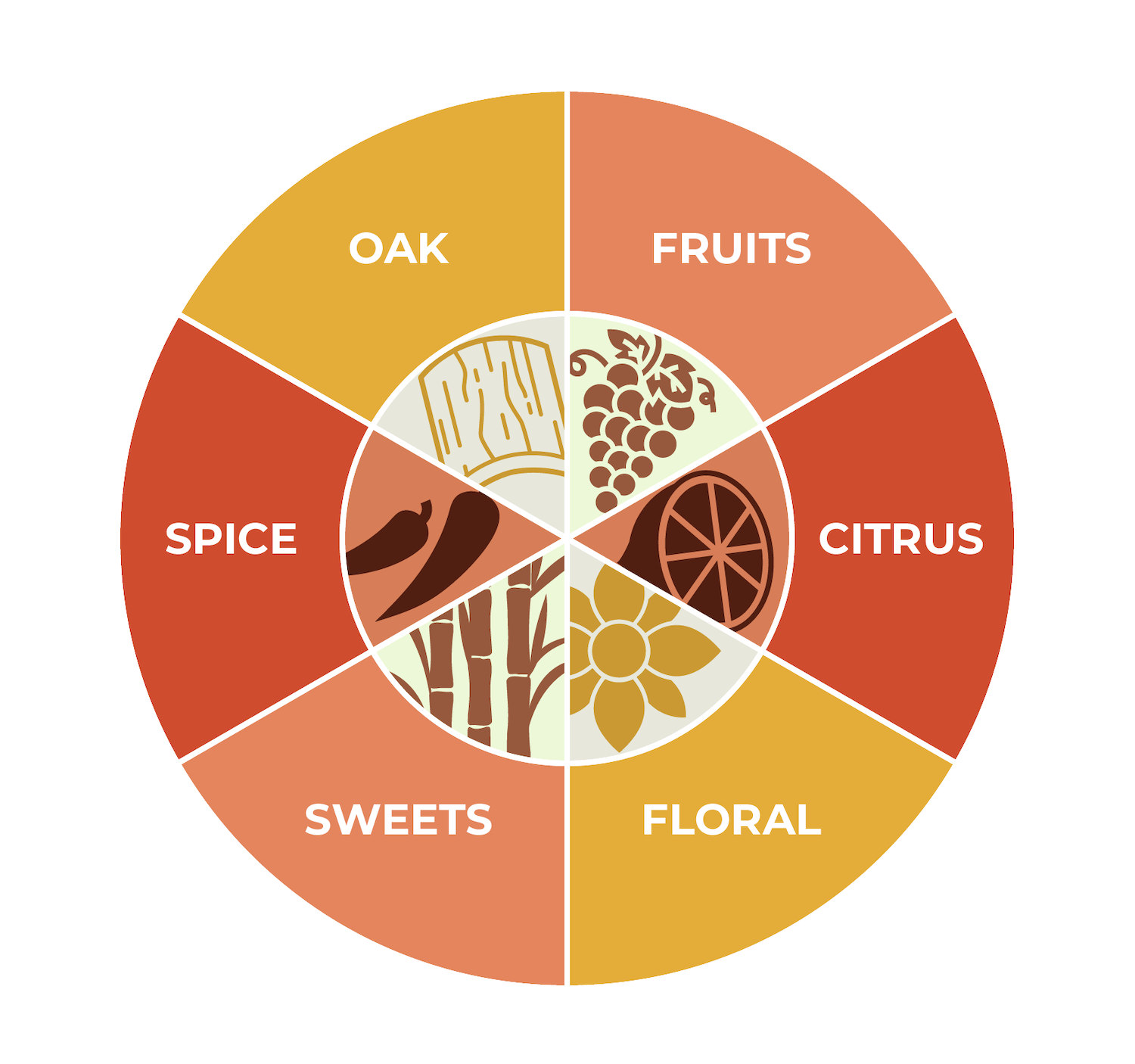Brandies are often viewed as a wealthy old man's drink or reserved for consumption in popular rap videos.
In reality, brandy, in particular bottles of Cognac and Armagnac, are examples of some of the most intricately flavoured of spirits that can be widely enjoyed by almost everyone, regardless of palate.
Discover your passion for this premium and exquisitely flavoured spirit by reviewing our thorough guide to the world of brandy, Cognac, and Armagnac.
By its simplest definition, brandy is a spirit which has been distilled from wine or any other kind of fermented fruit juice.
The rules governing its production vary depending on location, however, and it can be aged or unaged and be produced anywhere in the world.
Distilled fruit juice spirits that are clear in colour and left unaged are often called eau de vie, which translates to “water of life”, although a number of different names are given to spirits made in this fashion found elsewhere in the world.
By far the most premium examples of brandy in the world come from France, who produce the world-renowned Cognac and Armagnac varietals.
Read this article to learn more about how these premium brandy varietals differ from the other types found elsewhere.
Generally speaking, the standalone term brandy is usually reserved for use only by those spirits distilled from grapes, with other types of distilled fruit spirits being called fruit brandy, among a swathe of other region-specific classifications.
When it comes to the fruits most common in the distillation of fruit brandy, prominent mentions include apples, pears, apricots, plums, and cherries, although there are many more exotic fruits in use around the world, including prunes or wild flowers.
These brandies can often either be aged or unaged and depending on where its made, will be subject to varying laws regulating its inherent alcohol percentage, its minimum ageing requirements, its prominent flavours, and permissible labels and names.
The prominent flavours in brandy vary dramatically depending upon the fruit base used and whether its been aged.
As a general rule, they are sweeter than whisky, with prominent notes of flowers, fresh and dried fruits, citrus, sweet spice, oak, and caramel.
In addition to their taste, brandy also tends to have a smooth texture and finish, particularly in the case of the more premium Cognac and Armagnac varietals.
When looking for a general idea of how ageing affects the flavour of the brandy product, unaged eau de vie spirits typically taste and smell prominently of the fruit used in its production, whilst well aged Cognacs are strongly influenced by the characters of the oak barrel used during ageing.
One of the most prolific producers of brandy in the world, France is responsible for crafting the coveted Cognac and Armagnac varietals.
Made exclusively from grapes grown in the South West region of France, these two types of brandy represent the premium end of brandy and as a result have a long list of laws and classifications governing their production.
Other than these two, France also produces a number of distilled fruit spirits, which are sometimes left unaged and called eau de vie, with the term typically only being used to classify those unaged distilled fruit spirits not already called brandy, Cognac, or Armagnac.
An example of this is during the production of Cognac and Armagnac, where the clear, unaged distilled grape product produced by the distilleries is called eau de vie prior to being aged, blended, and bottled.
Outside of France, many other European countries and the United States produce their own unique types of brandy and eau de vie spirits, including Applejack, a form of apple cider based brandy produced in America, Damassine, a type of prune brandy made in Switzerland, and Rakia, a category of fruit brandy produced in many Eastern European nations.
With brandy being so varied in terms of its production techniques and prominent flavours, it is one of the biggest and most diverse spirit categories, offering a world of new tasting experiences.
Consider this article to explore even more of the different types of brandy made the world over.
Cognac, the pride and joy of French grape distillation alongside Armagnac, is a prominent feature of many rap videos and top shelves. There are a number of distinctions that help set Cognac apart as one of the most premium spirits available, which are explored in our comprehensive guide to Cognac.
Though sometimes outshadowed by its more famous relative Cognac, Armagnac rightly deserves its own special as one of the most sought after french spirits available. To discover why Armagnac is such a distinguished spirit and why it belongs on everyone's tasting list, view our complete guide to Armagnac.
Though much more famous for its burgeoning whisky, rum, and craft gin spirits categories, Australian brandy has much to offer the world thanks, in part, to its strong winemaking roots. See why Australian brandy deserves unwavering attention by reviewing our consummate guide to Australian brandy.
With brandy being such a diverse spirit category, exploring all of the different types and unique examples of the spirit across the globe is a hard task for anyone. In our guide to global brandy, we classify, describe, and discuss some of the biggest brandy varieties from around the world.



